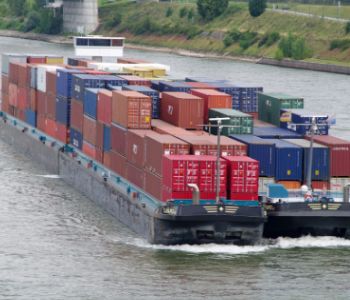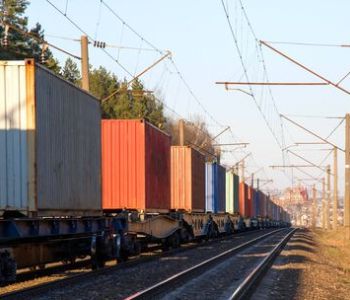Locations that are further away from shipping ports will require an additional transportation leg to move cargo between both points. The mode of transport is typically via truck, barge, or rail. Most shippers and consignees who are located further inland commonly request for these services.
An Inland Haulage Charge (IHC) is a fee that is issued by the carrier to the cargo owner for pre- or on-carriage services, typically from the port of discharge to the consignee’s premise , or from the shipper’s premise to the port of loading. The IHC forms part of the overall ocean freight charges and is commonly quoted separately when the service is requested.
An inland haulage service can be arranged for a shipment with service type door-to-door, door-to-port or port-to-door. This means that the appointed carrier is arranging the inland haulage and in the Bill of Lading, the port of loading will be the port the cargo is loaded, whereby the final destination shows the inland haulage point.
When Do Inland Haulage Charges Occur?
An Inland Haulage Charge will only occur if the cargo owner has appointed the ocean carrier (shipping line or freight forwarder) to arrange the pre- or on-carriage to an inland location.
There are typically three locations where inland haulage is arranged to:
- Shipper’s premise – located at origin
- Consignee’s premise – located at destination
- Inland Container Depot (ICD) – located at origin and/or destination
Ocean carriers usually have a vast network of partners or even their own fleet to move cargo inland, as these services are in high-demand.
How Is Inland Haulage Arranged?
Once the service request is quoted and accepted, a carrier will proceed to arrange the inland cargo transportation. This will include the move of containers from the port to an ICD or the consignee’s place, or from a shipper’s location or ICD to the port.

Inland Haulage By Truck

Inland Haulage By Barge

Inland Haulage By Rail
Cargo is typically moved either via truck, barge or rail and the exact mode of transport depends on the location and cost. Carriers will commonly advise the most cost effective solution or give multiple options to select from.
Here’s an example:
An exporter is shipping 3 x 40’ containers from California, United States to Spain. The consignee is located in Zaragoza, Spain and the shipment term is freight collect.
Here, the consignee is paying for the freight and requests the ocean carrier to quote on a port-to-door basis, as the shipper is delivering the cargo to the port of loading.
As the nearest port to the customer’s location is Valencia, Spain, the port of discharge in the BL will indicate Valencia (ESVLC), and the final destination will indicate Zaragoza ICD, which is an inland depot.
The consignee plans to pick up the cargo from the inland container depot in Zaragoza themselves, as they plan to store the containers there for a while before receiving it. Therefore, the carrier will arrange the inland haulage from the port to an interim point and bill the consignee an Inland Haulage Charge.
Can Inland Haulage Charges Be Avoided?
Inland Haulage can be avoided if the consignee or shipper chooses to to arrange the pre- or on-carriage with their own vendors and not through an ocean carrier. This also means that they are now required to monitor, arrange and pay for this additional transportation leg separately.
It gets a little more complicated if a shipment needs to be moved by a barge or rail. For these types of movements, it is highly recommended to work with a forwarder or shipping line because of their extensive business relationship, network, and volume in exchange for convenience and a more competitive rate.
Here is a basic rate breakdown for the example given earlier:
- Shipment: 3 x 40′ GP Containers
- Port of Loading: Long Beach California, United States
- Port of Discharge: Valencia, Spain
- Final Destination: Zaragoza, Spain
- Ocean Freight – $12,500.00
- Inland Haulage Charge (IHC) – $2,250.00
- Total: $14,750.00
Depending on the needs of the cargo owner, quotations are usually presented this way for a clear understanding on how the cargo will move from the point of origin or to the final destination.
In certain scenarios, carriers are able to offer a more attractive rate for IHC compared to self-arrangements due to their vast network and partnerships around the world.
Carriers with Inland Haulage Services
Most shipping lines are able to provide pre- and on-carriage services for inland transportation. Freight forwarders on the other hand have more flexibility, as they can opt to use a carrier service for their customers, or call upon their own fleet or partner networks for inland haulage services.
Therefore, freight forwarders typically don’t have fixed rates or service offerings, as they would be relying on third party quotations. You may use the table below to further explore carriers who offer inland haulage. Please note that this list of carriers is not exhaustive.
| Carrier | Inland Haulage Service |
| APL | Link |
| CMA | Link |
| COSCO | Link |
| Evergreen | Link |
| Hapag-Lloyd | Link |
| Hamburg Sud | Link |
| MSC | Link |
| ONE | Link |
| OOCL | Link |
| Maersk | Link |
| Kuehne + Nagel | Inquire with forwarder |
| DHL Global Forwarding | Inquire with forwarder |
| DSV | Inquire with forwarder |
| DB Schenker | Inquire with forwarder |
| Expeditors | Inquire with forwarder |
What Is the Difference Between Inland Haulage Charges (IHC) vs Terminal Handling Charges (THC)
Oftentimes, carrier related charges are misunderstood or conflated, as they offer a wide variety of services besides sea freight. There are distinct differences between both terms.
Terminal handling charges (THC) are charges by the carrier to the cargo owner for handling activities that occur at the port. This includes storage of containers in the terminal, container management activities such as unloading or loading to a truck, use of gantry cranes, stackers, and the movement of containers within the port.
On the other hand, Inland Haulage Charges are fees that incur for transportation from an external location to the port or from the port to an external location. While all shipments incur a terminal handling charge (OTHC / DTHC), not all shipments may incur an IHC.
This is because inland haulage is a service that is only rendered upon request to the ocean carrier.

Get Free Course Access
If you enjoyed the article, don’t miss out on our free supply chain courses that help you stay ahead in your industry.

Gerrit Poel
Co-Founder & Writer
at freightcourse
About the Author
Gerrit is a certified international supply chain management professional with 16 years of industry experience, having worked for one of the largest global freight forwarders.
As the co-founder of freightcourse, he’s committed to his passion for serving as a source of education and information on various supply chain topics.
Follow us